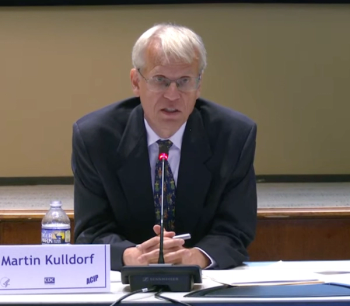
Diabetes, prediabetes screenings recommended to begin earlier
Physicians are recommended to start screening for the disease around age 35.
The U.S. Preventive Services Task Force (USPSTF) has updated its recommendation on when to begin screening patients for diabetes and pre-diabetes earlier than previously asserted.
According to a
"Clinicians can prevent serious health complications by screening adults with overweight or obesity for prediabetes and diabetes," task force member Chien-Wen Tseng, MD, MPH, MSEE, says in
Effective preventive interventions may prevent or delay diabetes in those for which screening shows prediabetes. Changes in lifestyles, like adjusting diet and increasing physical activity have been shown to preventing diabetes, improving weight, blood pressure, and lipid levels, the statement says.
“Fortunately, there are interventions that are effective for preventing prediabetes from progressing to diabetes and in helping people with prediabetes improve their health,” task force vice chair Michael Barry, MD, says in the statement. “The Task Force encourages clinicians to screen adults over age 35 with overweight or obesity and work with them to determine if an intervention is needed.”
According to a news release, the product, Semglee (insulin glargine-yfgn), is indicated to improve glycemic control in adults and children with Type 1 diabetes mellitus and in adults with Type 2 diabetes mellitus. It is both biosimilar to and can be substituted for its reference product, long-acting insulin analog Lantus (insulin glargine). This is the first insulin biosimilar approved by the FDA and these products can give patients more safe, high-quality, and possibly cost-effective options to treat diabetes.
“This is a momentous day for people who rely daily on insulin for treatment of diabetes, as biosimilar and interchangeable biosimilar products have the potential to greatly reduce health care costs,” Acting FDA Commissioner Janet Woodcock, MD, says in the release “Today’s approval of the first interchangeable biosimilar product furthers FDA’s longstanding commitment to support a competitive marketplace for biological products and ultimately empowers patients by helping to increase access to safe, effective and high-quality medications at potentially lower cost.”
Biosimilars are biological products with no clinically meaningful difference from a product already approved by the FDA. Interchangeable biosimilars can be substituted for their reference product without direct action by the prescriber. When marketed in the U.S., biosimilars usually launch with initial list prices 15 percent to 35 percent lower than the list prices of the reference product, the release says.
Newsletter
Stay informed and empowered with Medical Economics enewsletter, delivering expert insights, financial strategies, practice management tips and technology trends — tailored for today’s physicians.















